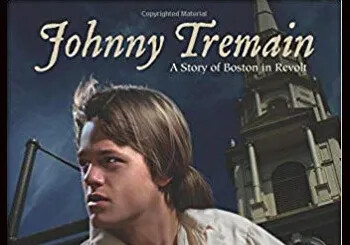How was this tension between Britain and America evident in New Hampshire?
Americans were increasingly alarmed by what they saw as signs of British aggression across the continent. Compounding their fears were local tensions with the Crown that were specific to each colony. In New Hampshire, these tensions were focused in three areas:
1) New Hampshire’s proximity to Boston pulled the colony into Boston’s ongoing disagreements with the Crown. The merchants who lived in New Hampshire’s seacoast communities had numerous ties to their counterparts in Newburyport, Salem, and Boston. In the western part of the state, the settlers who had been pouring into the Merrimack River Valley since the 1740s originally came from Massachusetts, and many maintained extensive ties with the communities they had left behind. Just like today, New Hampshire was in essence part of the greater Boston area, and thus its people felt an inevitable sympathy for Boston’s ongoing disputes with the Crown.
2) The extended Wentworth family, which had been the dominant political force in New Hampshire since the 1730s, was undisputedly associated with the Crown. Those who did not ally themselves to the Wentworths found themselves shut out of the colony’s political hierarchy. The growing political tension between Britain and America offered opportunities to men outside of the Wentworths’ circle that had previously been denied them. Governor John Wentworth found himself increasingly stuck between his superiors in London and a growing patriot movement in New Hampshire that had had enough of the Wentworth family and its allies.
3) New Hampshire’s major export during the colonial era was the massive white pine trees, which the British navy used as ships’ masts. The trees were harvested throughout the colony, which is why so many communities today have a Mast Road or Mast Street. New Hampshire supplied more than 4,500 white pine trees during the colonial era, and the Crown claimed ownership of white pines even if they were on private land, which sparked much resentment among the colonists. It was a grievance that many colonists found intolerable, as these valuable and useful commodities were taken from their land without their consent. With most of New Hampshire unsettled before the 1760s, there were only minor conflicts between colonists and Crown officials over mast trees in this early period, especially as Crown officials tended to quietly ignore the law and let colonists use their trees without interference. But by the mid-1760s, much of New Hampshire was in the process of being settled, meaning more of the white pine trees were on private land, prompting more conflicts between colonists and Crown officials.
How did New Hampshire come to claim its independence from Great Britain?
Throughout the tumultuous events in Boston during the 1760s (the Stamp Act riots, the landing of British troops, and the Boston Massacre), the Wentworth faction managed to keep New Hampshire out of most of the disagreements with the Crown. For example, New Hampshire did not send delegates to the Stamp Act Congress in October 1765 (a colonial representative body formed to protest the Stamp Act), nor did New Hampshire merchants join in the nonimportation agreements formed in other major American cities to protest the Townshend Act in the late 1760s.
But with each new conflict between the British Crown and the Americans, more and more people from New Hampshire became sympathetic to the patriot cause, and the Wentworth faction began to lose its hold on the government. By the early 1770s, New Hampshire’s colonial legislature had become overtly hostile to the Wentworth faction. The growth of communities in the Merrimack Valley, where the Wentworths held little sway, further decreased the faction’s power, and the colony began to see an increase in public disaffection with Crown authority. During the Stamp Act crisis, patriot supporters throughout America began organizing themselves into groups called the Sons of Liberty. Many towns throughout New Hampshire had their own chapters, which corresponded with one another and kept a vigilant eye on Crown officials in the colony.
Inevitably, there were more conflicts between the people and the Crown. One such was in 1772, when a number of farmers were caught with white pine trees at a sawmill in Goffstown and fined accordingly. Some of the farmers refused to pay and forced the royal officials to flee in the middle of the night from the inn they were staying at in nearby Weare. The episode became known as the Pine Tree Riot.
Shortly thereafter, the New Hampshire legislature formed a committee of correspondence, against the wishes of Governor John Wentworth, to maintain regular communication with the other colonies, a clear sign of increased coordination between the colonies. After the Crown closed the port of Boston in early 1774 in response to the Boston Tea Party, patriot supporters in New Hampshire sent food and supplies to their counterparts in Massachusetts.
Then in December 1774 British authority and American resistance came close to violence in New Hampshire. Patriot leaders in Boston dispatched Paul Revere to Portsmouth with a message that two British ships were bound for Castle William and Mary, the fort that defended Portsmouth Harbor. The British aim was to re-enforce the small garrison of just five men and secure a large stash of gunpowder. This was Revere’s first midnight ride to warn patriot leaders, taken four months before Lexington and Concord.
In response to Revere’s warning, a crowd of 400 New Hampshire patriots stormed the fort, captured the garrison, and moved the gunpowder to a safe location before the British ships arrived. Wentworth was unable to stop the patriot uprising: local political leaders and the Portsmouth militia ignored his pleas and refused to intervene with the patriots’ assault on the fort. In fact, the crew of Wentworth’s personal boat even refused to row him out to the fort. When the British ships arrived, they seized the fort, but all the military stores had already been safely removed by the patriots. (The gunpowder was later used at the Battle of Bunker Hill.) In the end, no shots were fired at the capture of Fort William and Mary, and no one was injured, but the episode marked the beginning of the end of royal government in New Hampshire.
Wentworth and his allies had very little political power left by 1775. When he refused to convene the New Hampshire legislature, the patriots simply convened their own legislature, called the Provincial Congress, without the governor’s consent. The congress met in Exeter, as Portsmouth was considered too sympathetic to the Wentworths even at this late date. Exeter remained New Hampshire’s center of government throughout the revolution, and the Provincial Congress took over the governing of the colony, even before Wentworth and his family fled in June 1775 for the relative safety of Nova Scotia.
The Provincial Congress needed some sort of legal authority to govern, though, now that royal authority in the colony was at an end and the people were no longer subject to the Crown. After a series of sessions, the congress produced a written constitution for New Hampshire in January 1776 that laid out in just two pages a structure for New Hampshire’s government. Fearful of the power once wielded by the Wentworth faction, the delegates did not include an executive branch. All government at the state level came from the legislature. Although the state constitution did not specifically assert New Hampshire’s independence from Great Britain, its sovereignty was implicit. It was the first colony to make such a claim, even indirectly, and the first to adopt a written constitution.
Within weeks of the state constitution’s passage, New Hampshire’s delegates to the Continental Congress in Philadelphia were urging their colleagues to do the same for all the colonies. When the Continental Congress adopted the Declaration of Independence on July 4, 1776, three New Hampshirites signed the document: Josiah Bartlett, William Whipple, and Matthew Thornton. With the political revolution complete, New Hampshire—and the rest of the colonies—just had to win the war against Great Britain to secure their independence.











